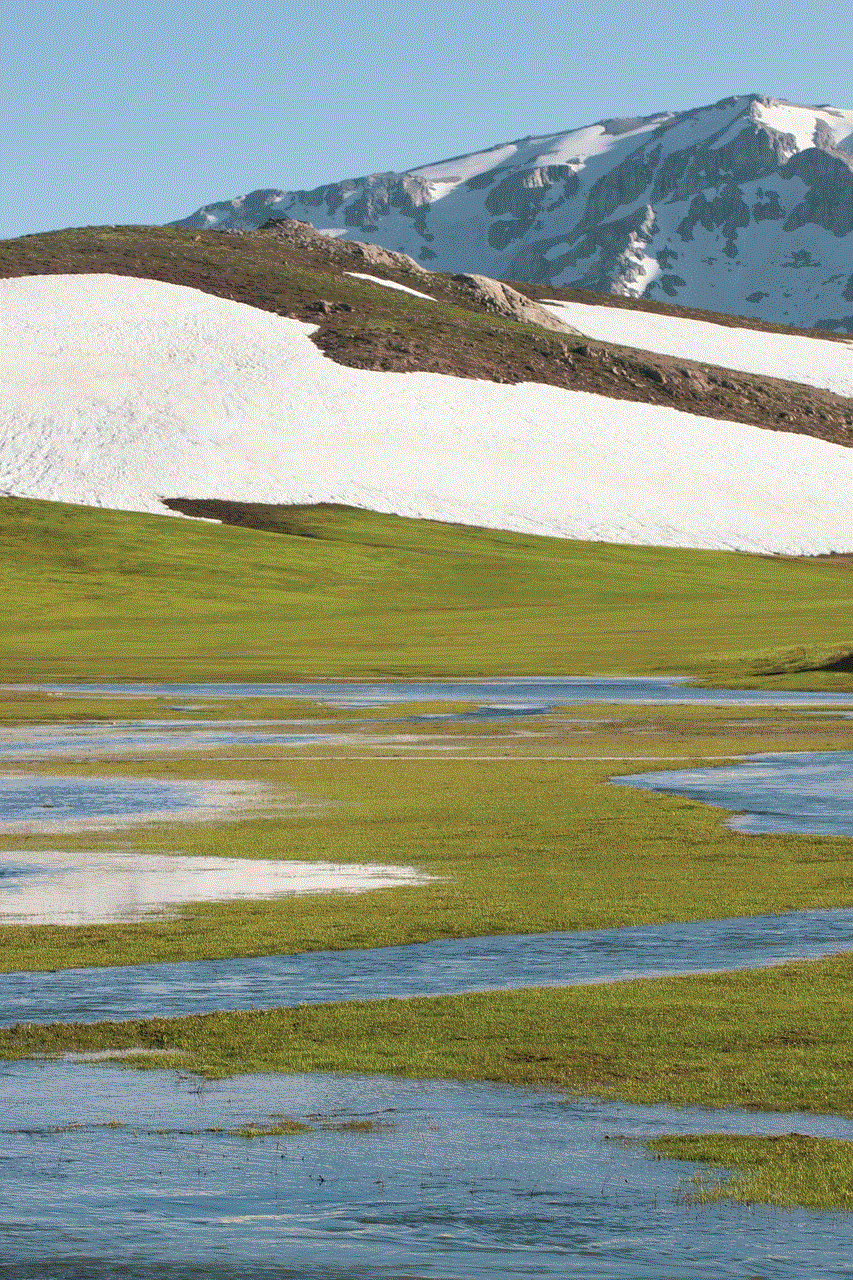hackers used fake gpu overclocking malware
Title: Unveiling the Threat: Hackers Exploit Fake GPU Overclocking Malware
Introduction:
In today’s digital age, cybercriminals are continuously looking for new ways to exploit unsuspecting victims. One such method gaining popularity is the use of fake GPU overclocking malware, allowing hackers to infiltrate systems, compromise security, and potentially steal sensitive information. This article delves into the world of cyber threats, exploring this specific type of malware, the techniques employed by hackers, and the potential consequences for individuals and organizations.
1. Understanding GPU Overclocking:
To comprehend the gravity of the threat, it is essential to grasp the concept of GPU overclocking. Graphics Processing Units (GPUs) are designed to handle the intense computational demands of modern-day applications, particularly in gaming and visual processing. Overclocking involves pushing the GPU beyond its factory-set limits to achieve higher performance. Unfortunately, cybercriminals have found a way to exploit this technique for their nefarious purposes.
2. Exploiting the Trust:
Hackers are well aware that many users seek to maximize their GPU’s capabilities through overclocking. By creating fake GPU overclocking software, cybercriminals prey on this desire for optimization, tricking users into downloading and installing malware disguised as legitimate applications. These malicious programs often masquerade as trusted brands or popular utilities, luring victims into a false sense of security.
3. The Mechanism of Fake GPU Overclocking Malware:
Once installed, the malicious software starts executing its intended purpose. It may either initiate a genuine-looking overclocking process to maintain credibility or simply run in the background, collecting sensitive information. These malware strains are often equipped with keyloggers, spyware, or ransomware, enabling hackers to gain unauthorized access to personal or organizational data.
4. Distribution Channels:
Cybercriminals leverage various distribution channels to propagate their fake GPU overclocking malware. Common methods include spam emails, compromised websites, social engineering techniques, or even injecting malware into legitimate software packages. Awareness of these potential sources is crucial to avoid falling victim to such attacks.
5. Signs of Infection:
Detecting fake GPU overclocking malware can be challenging, as it is designed to remain undetectable. However, certain signs may indicate a compromised system, such as decreased performance, increased system crashes or freezes, unexpected pop-ups, or unusual network activity. Users must remain vigilant to protect themselves from potential threats.
6. Consequences for Individuals:
For individuals, falling prey to fake GPU overclocking malware can have severe consequences. Beyond compromising personal data like financial information or login credentials, it could lead to identity theft, financial loss, or even blackmail. Additionally, infected systems may become part of a larger botnet, contributing to distributed denial-of-service (DDoS) attacks or other malicious activities.
7. Impact on Organizations:
The consequences of fake GPU overclocking malware extend beyond individual users, posing significant risks to organizations. Once infiltrated, cybercriminals can exploit sensitive company data, jeopardizing trade secrets, intellectual property, or customer information. Data breaches resulting from these malware attacks can severely damage an organization’s reputation, leading to financial losses and potential lawsuits.
8. Mitigating the Threat:
To protect against fake GPU overclocking malware, individuals and organizations need to implement robust cybersecurity practices. Regularly updating software, employing reliable antivirus and anti-malware solutions, and avoiding suspicious downloads or emails are essential preventive measures. Additionally, educating users about the risks and raising awareness can significantly reduce the likelihood of falling victim to such attacks.
9. The Role of Manufacturers:
GPU manufacturers play a critical role in combating fake GPU overclocking malware. By implementing stringent security measures, ensuring secure software distribution channels, and offering regular firmware updates, manufacturers can help safeguard their customers against these threats. Collaboration with cybersecurity experts can also aid in identifying and addressing emerging vulnerabilities.
10. Future Developments:
As technology continues to evolve, cybercriminals will undoubtedly find new ways to exploit unsuspecting users. In response, researchers and cybersecurity professionals are constantly working to develop innovative solutions to counter these threats. Artificial intelligence (AI)-based detection mechanisms, enhanced user authentication measures, and improved threat intelligence sharing are just a few potential developments on the horizon.
Conclusion:
The rise of fake GPU overclocking malware underscores the importance of staying informed and vigilant in the digital landscape. By understanding the methods employed by hackers, individuals and organizations can take proactive steps to protect their systems and sensitive data. Collaboration between users, manufacturers, and cybersecurity experts is vital in mitigating the risks associated with these malicious activities. With a collective effort, we can reduce the success rate of cybercriminals and safeguard our digital lives.
can you pause your location on snapchat
Can You Pause Your Location on Snapchat ?
Snapchat is a widely popular social media platform that allows users to share photos and videos with their friends and followers. One of the features that sets Snapchat apart from other apps is its ability to show your location to others. While this feature can be fun and useful for some, there may be times when you want to pause or disable your location on Snapchat. In this article, we will explore whether it is possible to pause your location on Snapchat and discuss some potential reasons why you might want to do so.
Snapchat’s location feature, known as Snap Map, allows users to see the locations of their friends on a map. When you open the app, you can pinch the screen to access the Snap Map and see the Bitmoji avatars of your friends who have enabled their location sharing . This feature can be helpful for finding nearby friends or discovering interesting events happening in your area.
However, there may be situations when you prefer to keep your location private. For example, you might not want others to know where you are at all times, especially if you are concerned about your privacy and security. In such cases, you may want to pause or disable your location on Snapchat temporarily or permanently.
Unfortunately, Snapchat does not provide a built-in option to pause or disable your location entirely. This means that if you have enabled location sharing, your friends will be able to see your Bitmoji avatar on the Snap Map whenever you use the app. However, there are a few workarounds that you can try if you want to limit or hide your location on Snapchat.
First, you can manually adjust your location settings to control who can see your location. Open Snapchat and go to your profile by tapping on your Bitmoji avatar in the top left corner of the screen. From there, tap on the gear icon to access your settings. Scroll down and select “See My Location.” Here, you can choose between three options: “My Friends,” “Select Friends,” or “Only Me.”
The “My Friends” option allows all of your Snapchat friends to see your location on the Snap Map. “Select Friends” allows you to choose specific friends who can see your location, while “Only Me” restricts your location visibility to yourself. By selecting the “Only Me” option, you effectively pause your location sharing on Snapchat, as only you will be able to see your own Bitmoji avatar on the Snap Map.
Another option to pause your location on Snapchat is to enable the Ghost Mode feature. Ghost Mode allows you to hide your location from everyone, including your friends. To enable Ghost Mode, open Snapchat and access the Snap Map by pinching the screen. From there, tap on the settings icon in the top right corner, represented by a gear. In the settings menu, you will find the “Ghost Mode” option. Toggle it on, and your location will be hidden from others on Snapchat.
It’s important to note that while Ghost Mode hides your location from others on Snapchat, it does not prevent Snapchat from collecting and storing your location data. Snapchat, like many other social media platforms, collects user data for various purposes, such as improving the app’s functionality and providing personalized content. Therefore, if you have concerns about your privacy, it’s essential to understand the data collection and usage practices of the apps you use.
In addition to the aforementioned methods, there are some third-party apps and hacks that claim to allow you to pause or modify your location on Snapchat. However, it’s important to exercise caution when using such apps or hacks, as they may violate Snapchat’s terms of service and could potentially compromise your account security. It’s always best to use official and legitimate methods provided by the app itself to modify your privacy settings.
Now that we have explored some methods to pause or disable your location on Snapchat, let’s discuss some potential reasons why you might want to do so. Privacy and security concerns are often the primary reasons why individuals choose to limit their location visibility on social media platforms.
By sharing your location on Snapchat, you are essentially broadcasting your whereabouts to all of your friends. While this can be fun and convenient in certain situations, it can also leave you vulnerable to potential risks. For example, if someone with malicious intent knows your location, they could potentially track your movements and target you for theft or other crimes. Therefore, it’s understandable why some individuals might prefer to keep their location private and limit who can see it.



Moreover, sharing your location on Snapchat can also lead to unwanted social interactions or invasions of privacy. For instance, you might not want certain friends or acquaintances to know your exact location at all times. By pausing your location or using Ghost Mode, you can have more control over who can access your location information.
Additionally, some individuals prefer not to share their location on social media due to personal or professional reasons. For example, if you are on vacation or taking a break from work, you may not want your colleagues or employers to know your whereabouts. Similarly, if you are attending a private event or spending time with family, you might want to keep that information confidential.
In conclusion, while Snapchat does not provide a direct option to pause your location entirely, there are ways to limit or hide your location on the app. By adjusting your location settings or enabling Ghost Mode, you can control who can see your location on Snapchat. However, it’s important to remember that Snapchat still collects and stores user location data for its own purposes. If privacy is a significant concern, it’s advisable to familiarize yourself with the app’s data collection practices and exercise caution when sharing personal information on social media platforms.
how to screen shot snapchat
How to Screenshot Snapchat: A Comprehensive Guide
Snapchat is a popular social media platform known for its disappearing photos and videos. However, there may be times when you come across something interesting or important that you want to capture and save for later. While Snapchat has implemented measures to prevent users from taking screenshots, there are still ways to bypass these restrictions. In this comprehensive guide, we will explore various methods to screenshot Snapchat, including both official and unofficial ways. So, let’s dive in!
1. Official Methods:
Snapchat allows users to take screenshots within the app with a few limitations. When you receive a snap, you can take a screenshot by following these steps:
– Open the snap you want to capture.
– Press and hold the home button and the power button simultaneously (for most Android devices).
– For iOS devices, press the home button and the lock button at the same time.
– The screen will flash for a brief moment, indicating that the screenshot has been captured.
2. Airplane Mode Method:
Another official method to screenshot Snapchat without the sender being notified is by using the Airplane Mode technique. Here’s how you can do it:
– Open Snapchat and wait for the snap to load.
– Turn on Airplane Mode on your device.
– Take a screenshot as you normally would.
– Close the app and turn off Airplane Mode.
3. QuickTime Screen Recording:
If you have access to a computer , you can use QuickTime Player to record your iPhone screen. Here’s how:
– Connect your iPhone to your computer using a lightning cable.
– Open QuickTime Player on your computer.
– Click on “File” and then select “New Movie Recording.”
– A recording window will appear. Click on the arrow next to the record button and select your iPhone as the recording source.
– Open Snapchat on your iPhone and play the snap you want to capture.
– Click on the record button in QuickTime Player to start the screen recording.



– When you’re done, click on the stop button, and the recording will be saved on your computer.
4. Third-Party Apps:
There are several third-party apps available for both Android and iOS devices that allow you to take screenshots on Snapchat without notifying the sender. However, it’s important to note that using third-party apps is against Snapchat’s terms of service and can result in your account being permanently banned. If you still choose to proceed, make sure to do thorough research and proceed with caution.
5. Screen Recording Apps:
Another way to capture Snapchat snaps without being detected is by using screen recording apps. These apps allow you to record your screen while using Snapchat, including any snaps you receive. Some popular screen recording apps include AZ Screen Recorder (for Android) and Apowersoft iPhone/iPad Recorder (for iOS).
6. Using Another Device:
One of the simplest ways to screenshot Snapchat without the sender knowing is by using another device. Here’s how you can do it:
– Open Snapchat on your primary device and wait for the snap to load.
– Open Snapchat on another device (such as a tablet or a friend’s phone) and log in to the same account.
– Play the snap on the second device and capture a screenshot as you normally would.
– Since Snapchat doesn’t send notifications for screenshots taken on other devices, the sender won’t be notified.
7. Snapchat Memories:
Snapchat Memories is a feature within the app that allows you to save your snaps and stories. While it doesn’t technically take screenshots, it serves the same purpose by saving the content for future viewing. Here’s how you can save snaps to Memories:
– Open Snapchat and go to the snap you want to save.
– Swipe up from the bottom of the screen to access Memories.
– Tap on the “Save to Camera Roll” option to save the snap to your device.
8. Using a Camera:
If you want to capture a Snapchat snap without any digital traces, you can resort to using a camera or another phone to take a picture of your screen. While this method may not provide the best quality, it allows you to capture the snap without leaving any evidence on your device.
9. Disabling Screenshot Detection:
In some cases, users have reported success by disabling screenshot detection on their Android devices. Here’s how you can do it:
– Go to the “Settings” app on your Android device.
– Scroll down and tap on “Advanced.”
– Select “Developer options.”
– Look for the “Disable Flag Secure” option and enable it.
– Now, when you take a screenshot on Snapchat, the sender won’t be notified. However, note that this method may not work on all devices and might require some technical knowledge.



10. Conclusion:
While Snapchat has implemented measures to prevent users from taking screenshots, there are still ways to bypass these restrictions. Whether it’s using official methods like taking screenshots within the app or exploring unofficial ways like using third-party apps or screen recording, there are options available for users who wish to capture and save Snapchat snaps. However, it’s important to remember that using unofficial methods can violate Snapchat’s terms of service and may result in serious consequences, including account suspension or permanent banning. Use these methods responsibly and at your own risk.

